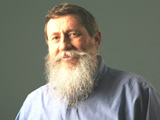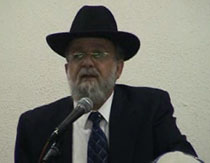Beit Midrash
- Torah Portion and Tanach
- Bereshit
- Vayishlach
- Sections
- Chemdat Yamim
- Parashat Hashavua
Two of last century’s great kohanim – Rav Meir Simcha of Dvinsk and Rav Avraham Yitzchak Kook – provided approaches. Rav Meir Simcha proposed that Yaakov left out camels to hint that his approach was different from Eisav’s. Eisav, the son of two saintly parents, Yitzchak and Rivka, had redeeming qualities – he stayed in Eretz Yisrael for many years, where he tithed his earnings and honored his parents admirably. However, Chazal tell us that these good deeds were accompanied by the most serious sins, including murder and adultery (see Rashi, Bereishit 25:25-29). In that way, the camel represented his qualities, in that it has one of the kosher signs (chews its cud) and yet is non-kosher because of the other one (lack of split hooves). Yaakov, in not associating himself with camels, hinted he was tam (complete) unlike Eisav – his actions did not create any signs of impurity.
Rav Kook, in the section of his siddur that deals with Purim, shows many words/word sets made from the letters of the word megilla. One of the several is gamal kah (Hashem has granted), with the first word also spelling camel. The historical struggle against Amalek (Eisav’s descendant) has an interesting connection to camels. David successfully fought Amalek and the only escapees were "400 youngsters who rode on camels" (Shmuel I, 30:17). Chazal (Midrash Rabba 78:15) connect this fact to the apparent disappearance of Eisav’s 400 men, the original number of the militia Eisav took with him to "greet" Yaakov. However, when Eisav actually encountered Yaakov, the narrative does not mention them, prompting the midrash to posit that one by one, they backed out of the encounter. It goes on to say that these people were rewarded in the form of the 400 Amalekites who escaped David’s battle. This shows us that Hashem grants reward (gomel) to those whose actions warrant it. The gemalim were absent, says Rav Kook, on account of the reward (gemul) of the positive action (gemul tov) that those who did not harm Yaakov’s family received.
This week’s haftara also repeats this concept of gemul for gemul – in the negative. Eisav’s descendants were informed that they will experience harsh gemul for the cruel actions (gemul) they did to Bnei Yisrael (Ovadia 1:10-15). The navi said that their gemul would return on their heads, an idea highlighted by the use of the root four times in one set of p’sukim in Yoel (4:4,7). In this case it was also a fulfillment of the prophecy to Rivka, that the older one would be subservient to the younger one.
May we see the fulfillment of the prophecy of Ovadia (1:21) about the recognition of the sons of Yishmael and Eisav at the time of our liberation. The blessings Yaakov received will show that there is an appropriate gemul for both the positive and negative actions of individuals and nations.

Hitler and Eisav
Parashat Vayishlach
Rabbi Moshe D. Lichtman | 5764
Guarding the Honor of Israel
Rabbi Zalman Baruch Melamed | Kislev 15 5783

“Not Yaakov … but Yisrael”
Rabbi Yossef Carmel | 11 Shvat 5784






















